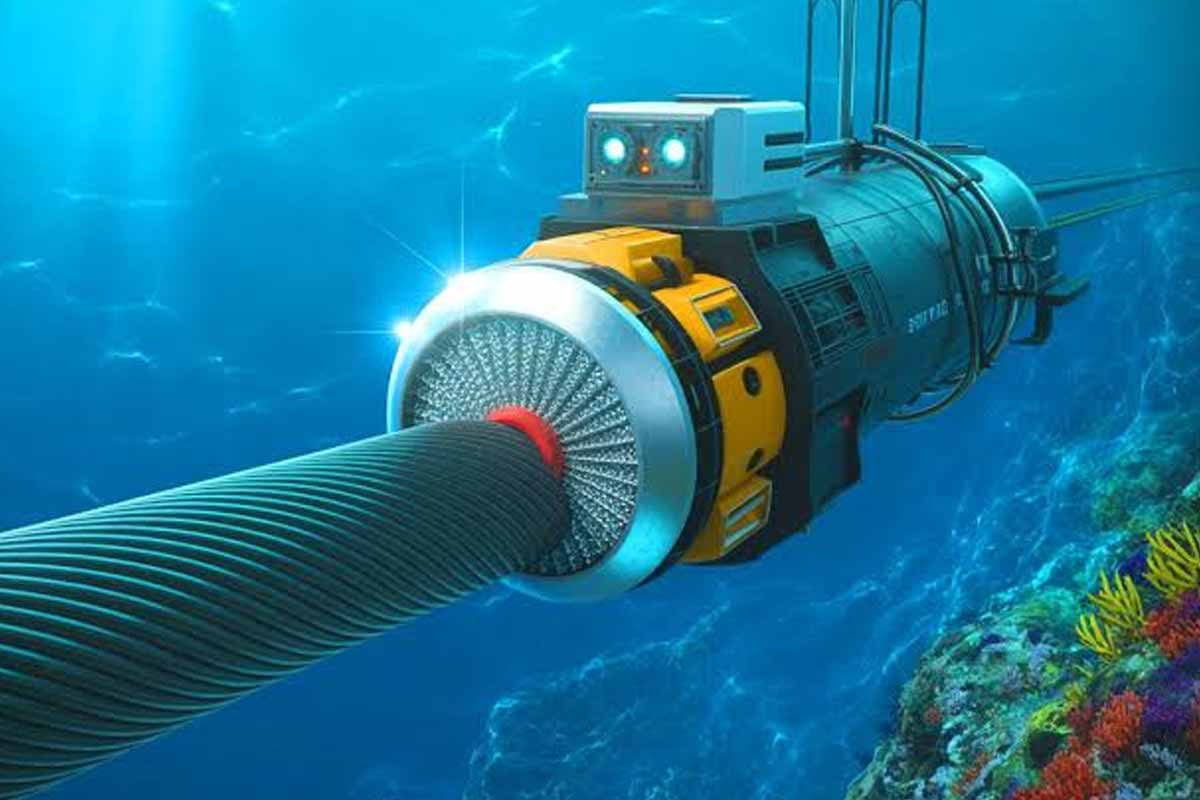Steel teeth lurking in the deep now haunt the world’s lifelines, and the stakes could not be higher. Global networks rely on seabed cables for almost every message, trade, and command. Engineers have unveiled a submersible-mounted tool that can reach abyssal zones where fiber routes hide. One precise strike could darken continents, yet the device remains shrouded in secrecy, scale, and intent. Amid rising unease, China stands at the center of a contest over resilience, deterrence, and control.
How the deep-sea cable cutter changes the balance
At the center sits a titanium-shelled device built by the Ship Scientific Research Centre (CSSRC), paired with crewed and uncrewed submersibles Fendouzhe and Haidou. Rated for 13,000 feet, it targets armored fiber routes that carry ninety-five percent of world traffic. Because reach meets precision, China gains leverage where surveillance falters.
The tool uses a diamond-coated grinding wheel spinning near 1,600 rpm, which chews steel while leaving sediment calm. A titanium alloy shell and oil-compensated seals resist crushing pressure. Robotic arms guide the module with acoustic and visual cues, so operators maintain placement even in turbidity, extreme darkness, and strong surge.
These seabed trunks wear steel and polymer armor because anchors, trawls, and quakes threaten fragile glass inside. Specialized submersibles approach slowly, then clamp the cutter around a segment like a cast. Engineers value the controlled grind, since clean separation enables salvage, while a jagged tear complicates splicing, testing, and restoration.
How China engineered a precision tool for the abyss
Developers describe civilian aims such as salvage, seabed mining, and maintenance. Yet the same capabilities expose chokepoints near Guam and hubs connecting continents and U.S. defense zones. Because precision invites discretion, planners fear deniable operations that mute traffic without warning.
Lead engineer Hu Haolong reports hurdles at depth, where pressure crushes housings and fouls sensors. A one-kilowatt motor couples to an 8:1 gear reducer to balance torque and control. During long cuts, teams monitor heat and oil balance, since overstress invites failure. Peer-reviewed studies document performance, methods, and safety margins.
Acoustic beacons, inertial sensors, and cameras guide placement when visibility drops and currents drag. Robotic manipulators hold housing stable as the wheel eats armor and glass, layer by layer. Because moves change outcomes, crews train procedures protect infrastructure in testing, yet adversaries could flip playbooks, using steps to degrade resilience.
Civil uses, military risks, and a fragile status quo
Operators insist the cutter supports repairs, salvage, and seabed resource projects, which build skills industry values. Incentives seldom stay separate from strategy, where cables cross continental shelves. As rivals map routes and patrol chokepoints, China’s tool forces planners to revisit continuity plans, timelines, crew training, and spares at landing stations.
Best practices now elevate redundancy, rerouting, tamper sensing, and surveillance near key landings. Operators stage spares, test repeaters, and drill for dark segments, because delays compound. Repair vessels need permits, escorts, and weather windows, while crews balance safety and tempo. Clear protocols reduce panic, so traffic migrates instead of collapsing.
Recent incidents involving seabed natural gas pipelines show attribution stumbles when evidence hides under miles of water. Mistakes include secrecy lapses, reporting gaps, and unclear authority in repairs. Teams improve by hardening documentation, sharing telemetry, and tracking anomalies, because verification builds confidence while finger-pointing without proof fuels escalation and rumor.
China’s undersea reach, stealth platforms, and tactical chokepoints
With the world’s largest submersible fleet, the program can surge crewed dives and send unmanned vehicles. Numbers grant reach, since multiple platforms scout, while others carry tools. Stealth improves odds near bottlenecks, where few cuts disable paths. Small teams shadow routes, then move when weather, shipping, and politics grant cover.
Trials show the cutter severed cables 2.4 inches thick, according to reports. Engineers frame the effort as support for “marine resource development,” which includes salvage and extraction. Dual-use persists, because the same tool aids repair in storms and threatens continuity where routes converge.
Unmanned platforms shrink signatures, so patrols struggle to track and intercept them offshore. Acoustic quieting, low lighting, and task windows reduce exposure while teams stage decoys elsewhere. Because traffic concentrates at bathymetric pinch points, a single covert action can cause loss, before blame settles or repair vessels reach the scene.
Safeguards, collaboration, and the race to harden seabed links
Governments weigh joint protocols for alerts, shared hazard maps, and multinational exercises with repair ships. Because routes cross jurisdictions, standardized permissions and escorts could shave days from outages. Insurers reward resilience plans, while carriers harden stations with fences, cameras, and logs.
Technically, operators add seabed sensors, satellite watch, and drone patrols around sensitive segments. Tamper-evident markers reveal interference, while anomaly models fuse acoustic and traffic data to cue alerts. Repair contracts require surge capacity, so crews mobilize. When storms, permits, and politics collide, rehearsed playbooks keep work moving and messaging calm.
Diplomacy matters, because norms shape behavior at sea like patrols. States can exchange incident formats, share verification methods, and define standoff distances near landings. Industry needs clarity on sanctions, insurance, and liability. Progress remains fragile; incentives change quickly, while secrecy persists, so engagement helps pairs avoid spirals none can afford.
What matters next when lifelines face silent tests
Cities breathe through glass threads on the seafloor, and resilience starts before trouble appears. Leaders should treat seabed routes like critical arteries, because time saved in planning translates into hours saved at sea. Invest where redundancy adds options, share facts without bravado, and calibrate responses under pressure. Against that standard, China’s cutter challenges complacency yet also clarifies priorities: readiness, transparency, and restraint. Clear eyes, steady drills, and fast repairs keep markets calm while rivals posture.
